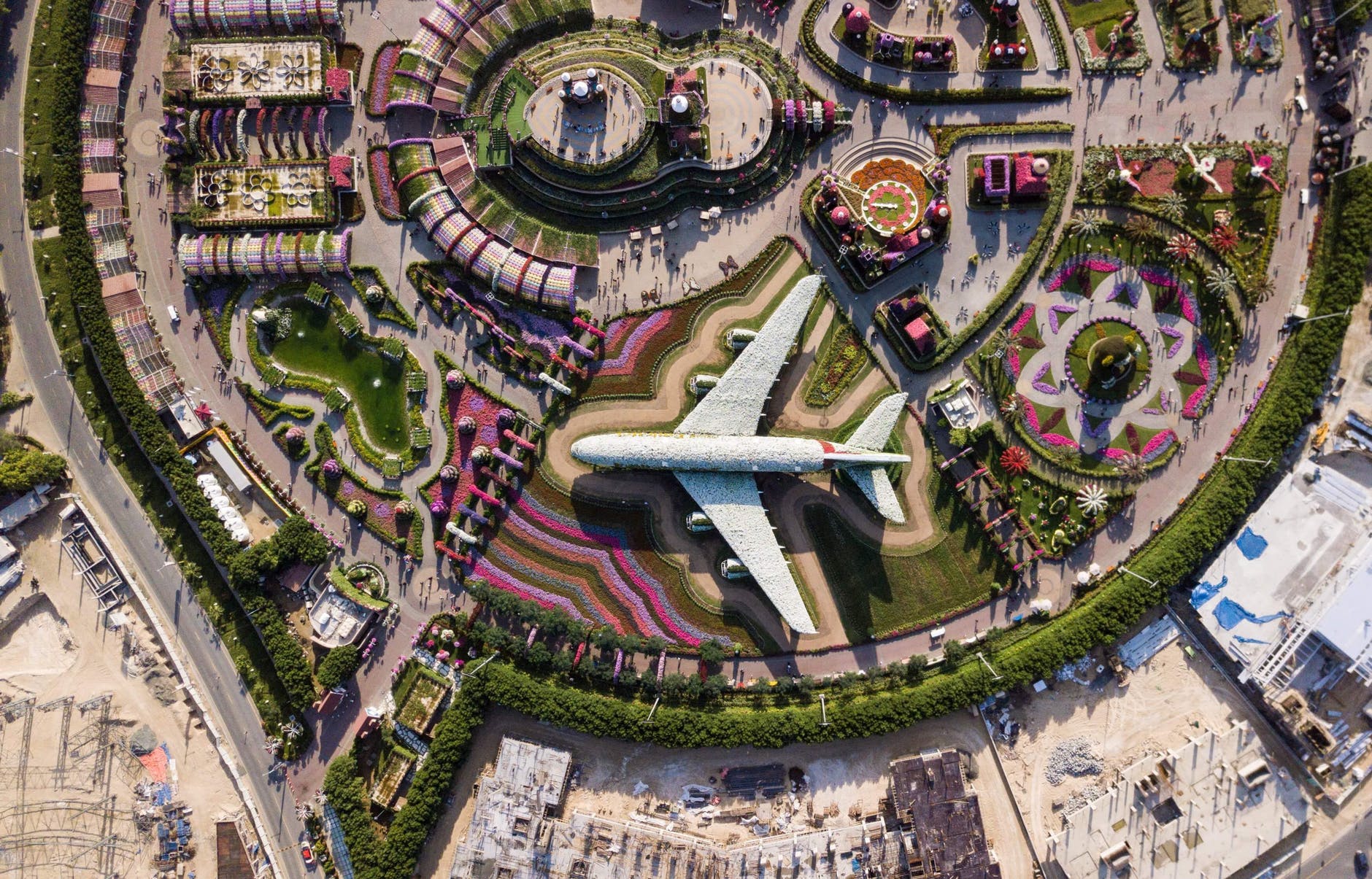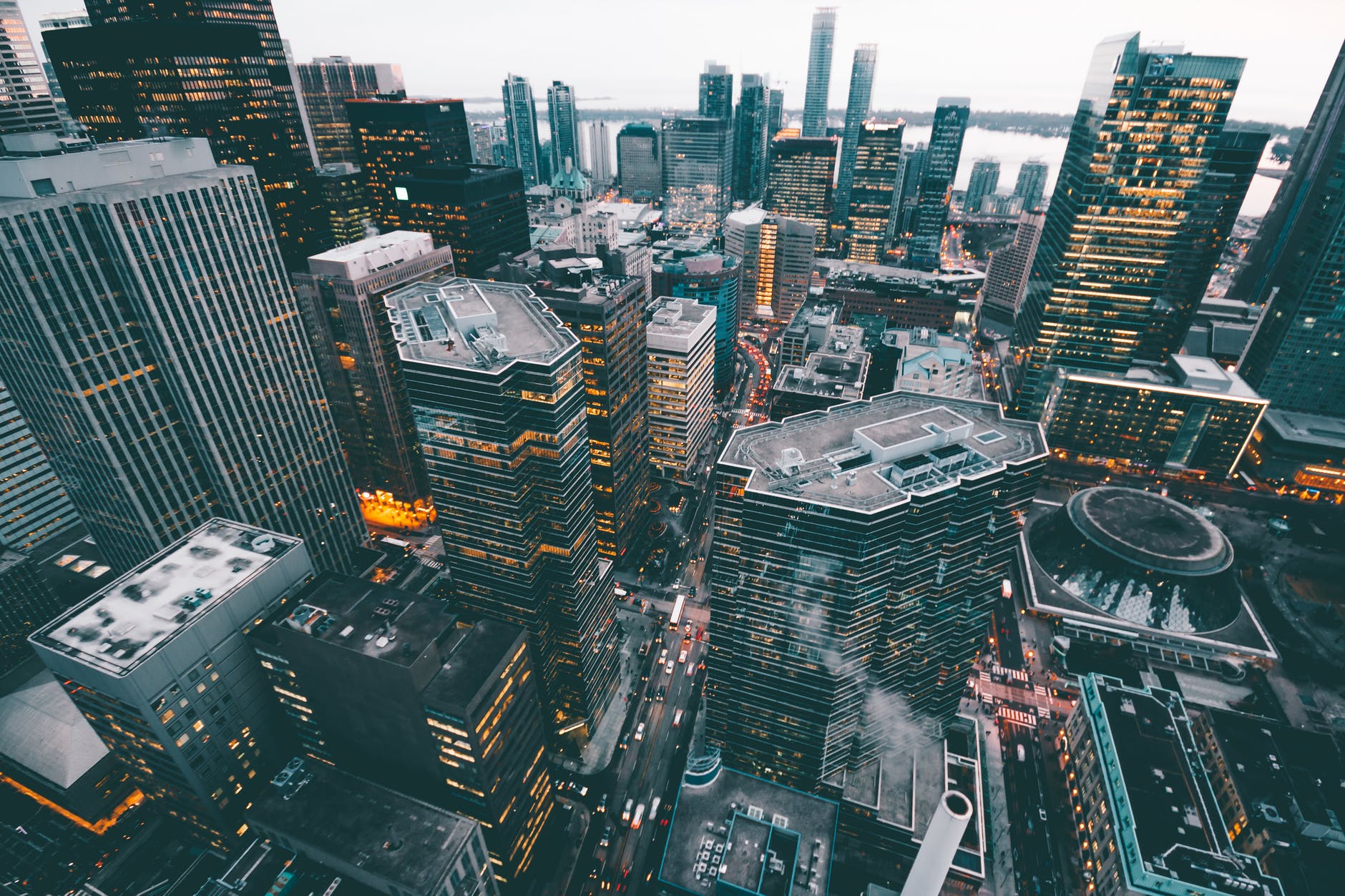Can Urban Design Create Smarter, Kinder Cities?
There is no one way to think about a city. But one thing, until recently, has been certain: cities aren’t thinking about you.
The idea of conscious cities challenges the assumption that cities are thoughtless spaces, or stationary backgrounds for busy urbanites to make their mark on. Cities make their mark on us in ways we don’t realize, and often unintentionally so. By adding intelligence to city design, urban planners have the opportunity to create smarter, kinder cities.
Like any sentient being, a conscious city affects how you feel and what you do. It is an active participant that can improve or worsen your health, your comfort, and your wellbeing. The concept was coined in a 2015 manifesto by Itai Palti and Moshe Bar.
“The foundation of consciousness lies in the city’s awareness of the motives, personalities and moods of its inhabitants,” the authors write. Though architects have long designed to elicit emotion, from Pyramids to monasteries, we now have the data to base these decisions— from small details to large-scale urban plans—on actual science instead of instincts.
This isn’t to say today’s cities weren’t purposefully designed. Most city streets are planned for efficiency; the same goes for buildings, which are designed for convenience, if not luxury or bravado. Concern for public health and comfort, though, has not always been high-priority, let alone backed by science. True, there was a brief moment in the 70s when psychologists teamed up with architects in an effort to encourage “environmental psychology.” Unfortunately, the idea fizzled quickly.
As urban populations surge, the first instinct of builders and planners may be to save and make space. This alone is not enough, especially considering the well-documented psychological effects of overcrowding. Planners need only utilize science and research to plan for happy, healthy cities. Otherwise, they may worsen the existing condition.
How Our Cities Change Us
Before planning for the future, it’s useful to understand what elements of urban design are impacting us today. We know, for example, that repetitive patterns like stripes and tiles can induce migraines or seizures, while more natural and visually interesting shapes and spaces can ease stress.
Then there’s the paradoxical phenomenon of loneliness in crowds. Ample evidence through MRI scans suggests that people who grow up in cities are more prone to mental health issues, and it’s likely that crowding is one of these reasons, as our brains are not conditioned for such environments.
Technology helps us understand the way our surroundings affect us in ways we may not understand on the surface. Social psychologist Colin Ellard conducted a study to examine the physical reaction participants had to building facades using EEG headsets and wristbands. He found that facades, in fact, played a large role in the comfort levels of the participants.
According to the BBC, “when he walked a group of subjects past the long, smoked-glass frontage of a Whole Foods store in Lower Manhattan, their arousal and mood states took a dive, according to the wristband readings and on-the-spot emotion surveys.” They sped up as if to escape a dead zone, then returned to a state of liveliness when passing storefronts.
Triangulation and public spaces foster community and reduce car accidents by implying that roads aren’t just for cars. Green spaces consistently correlate with higher levels of well-being in cities, even when taking other considerations into effect.
There are even worse ill-effects, planned or otherwise. The placement of highway systems and public transportation have led to segregation and poverty. Design features including spikes and high-pitched beeping discourage loitering at the expense of pedestrian comfort. Flashing lights and advertisements, especially at night, may induce anxiety and interrupt natural sleep cycles too.
Planning for the Future
Conscious cities, in theory, would use science and technology to optimize cities for the wellbeing of their inhabitants. This could—and should—go beyond just mental health by taking things like public health, ROI, and efficiency into consideration, too.
Take trees as an example. As a key component of “green space,” trees carry with them a number of psychological and physical benefits. A recent article by Vox outlined the findings of a recent Nature Conservancy report, concluding that “planting more urban trees, if done right, could save tens of thousands of lives around the world each year—by soaking up pollution and cooling down deadly heat waves.”
Besides these tangible, measurable effect, studies have found that simply viewing green space caused people to become happier and also changed their physiology, as their autonomic nervous systems showed strong signs of relaxation responses. Further research has shown that even simulated green space can have similar effects.
According to the Guardian, this type of research could be “the basis of a new and powerful discipline of experimental urban design based on sound principles of psychology and neuroscience,” perhaps utilizing virtual reality and other technology to simulate these types of responses. Neuroscience-based architecture and design could reinvent cities as we know them, or at the very least make little updates that pack a big punch.
After all, it follows that happier, more relaxed urban dwellers will be more productive, contributing to a happier and healthier economy. It’s a whole new way to think about cities, and ultimately a return on investment that can’t be ignored.
For Seniors and Disabled People, Adaptive Technology Helps at Home
Seniors and disabled people have specific living space challenges. Luckily, technology makes things easier.
When it comes to safety and accessibility, not all homes are created equal. In fact, a recent New York Times article highlights the difficulties of “aging in place.” The article states that less than 4 percent of the U.S. housing market has the three most important accessibility features. In order for older or disabled people to move, safely, around their living spaces they need entrances without steps, single-floor living, and wide hallways and doorways that can accommodate wheelchairs.
How many New Yorkers need to adapt their homes in order actually live there? Data shows that there are more than a million people, over the age of 65, living in New York City. According to a report by the Center for Independence of the Disabled, New York, “In New York City, there are 889,219 individuals with disabilities; that is, 11.0 percent of the population.”
Together, that means there are nearly 2 million New Yorkers that may need to adapt their homes in order to engage in standard activities of daily living. Both populations experience barriers, physical and communications-related, that the young and able-bodied don’t face, but that’s where New York grit and determination, combined with technology, come into play.
Because, whether the challenge is a senior’s desire to stay in their home, or a physical disability, adaptive technology is making things just a bit more user-friendly for people at all ages and stages of physicality.
The first place to consider adaptive technology is literally at the front door. Entering and leaving a home, or apartment, is a daily activity for most. Ideally, a door entry system with a keypad or hands free access should be installed at a height that’s convenient, usually about three-feet. Caretakers and family members can also have fobs, or access codes.
Senior safety devices are a growing field. Given that, according to the CDC, about 33 percent of accidents and falls involving people aged 65 and over occur at home, a Personal Emergency Response System, Medical Alert, or Medical Emergency Response System is a very good idea. All systems work easily; the push of a button summons emergency help (police, ambulance, etc.) immediately. The technology has been around for a while and today’s systems have three components. A small radio transmitter in the form of a “help” button carried or worn by the user sends a signal to the console, or base station, connected to the user’s telephone. The console automatically dials the Central Monitoring Station and an emergency response center monitors those calls.
On the other end of the technology spectrum are electronic personal assistants, like the Amazon Echo. “Alexa,” the electronic voice that takes requests from the user, can do everything from reciting the daily news, to setting a timer or alarm (think, medication reminder!) That’s without even considering the 15 thousand (and growing) list of “Skills” that can be added to Alexa’s “to do” list. For instance, Smart Skills allows the user to control lights and thermostats via the voice controlled system Uber and Lyft both have skills that can be enabled, making it easier on people who don’t drive.
(Of course, in New York, there are also cabs and excellent public transportation.)
For anyone who doesn’t want a Medical Alert system, but might need help quickly, The Ask My Buddy skill will send a notification (text, SMS or phone call) to a preselected contact. It’s perfect for emergencies when the phone is out of reach.
The ultimate in technology-that-helps is, of course, robotics. Toyota announced, in July, that it had completed its first in-home trial of the Human Support Robot (HSR.) The meter-high robot successfully helped a 100 percent disabled veteran with basic household tasks like opening doors and picking up a bottle of water.
The video makes it clear that this sort of technological assistance is life-changing.
Technology “gadgets” have the reputation of being novelties, but when those devices are used to help people live better, safer, more independent lives then it’s clear that they are valuable tools and not just toys.
How Real Estate Developers Can Help Alleviate Food Deserts
The U.S. Department of Agriculture (USDA) defines a food desert as a part of the country where it’s difficult to buy fresh fruit, vegetables, and other healthy whole foods. An area is considered a food desert if 500 people or more, or 33% of the population in the area live at least one mile away from a supermarket or large grocery store. If that distance is 10 miles or more, the area is described as a rural food desert.
According to a recent report by the Economic Research Service of the USDA, about 2.1 million households i.e. 1.8% all households live at least a mile away from a supermarket and don’t have a car, making accessibility harder.
Food deserts are common in impoverished areas. This means that, for these people, buying that nutritious fresh fruit takes a lot of careful consideration and money management. One is faced with the task of either taking the exhausting ride in a bus (which also costs money) or paying a significant proportion of the grocery bill to have the purchase delivered. With the budget constraints, neither of these choices makes sense.
The dilemma too often ends residents foregoing the healthy eating entirely. They substitute the healthy food they can’t get with the available unhealthy food. Yes, it’s a big irony that the available shops stock processed, sugary and fatty foods instead of healthy foods––leading to another epidemic: Obesity.
As a side note, studies have been conducted suggesting that the distance from a supermarket or large grocery store has very little to do with the unhealthy eating habits. The studies say that the healthy foods just don’t sell in those food desert areas and it wouldn’t make a difference if stores were opened.
But we can pursue the little difference such a change would make.
It’s encouraging to see that there’s a wide range of models such as non-profit, corporate, charitable, and governmental programs that have been employed in trying to tackle the problem.
Working together with the communities, I believe there are a couple of measures that real estate developers can also help alleviate the problem.
1. Community Gardens
A community garden is a piece of land gardened or cultivated by a group of people in the same locality, usually for domestic consumption.
In the past, many developers have less than championed community projects that looked to turn vacant lots into food production areas. Rather, they have been more for house development.
To encourage growth of food in these communities, developers need to take the center stage by not just allowing people to farm in their communities but also designing those spaces and even funding them.
Community gardens can also be set on hydroponic rooftops, freeing up more space for housing developments.
2. Farmer’s Markets
Very much like a community garden, a farmer’s market is a retail market that features foods that are sold by farmers directly to consumers.
Instead of developing a whole area, one could decide to leave out sufficient space for the development of a farmer’s market where farmers can easily sell their produce and consumers can access foods without having to travel for miles.
3. Employment Opportunities
As mentioned, food deserts are often found in impoverished areas. Hiring local skills provides employment and a source of income to the people. With that, they can actually start thinking about eating healthy.
Also, the employees get to learn from the masters, especially where the project is about sustainable food production in the community. They can then use the skills learned to grow their own food back home.
4. “Giving Up” Land
As the situation escalates, developers need to start giving up more land to set up of community gardens, farmers markets, and even stores.
Giving up land isn’t a new thing. Developers have been giving up land to the city during new housing developments.
This time, instead of constructing parks and public structures on that land, it should be turned into a food production area.
Besides, giving up land for food production raises the value of the project in the long run.
As retailers and the government continue looking for ways to address the situation, real estate developers must also chip in and do their best to utilize their knowledge, access, and tools to ensure that even the low-income residents are able to eat healthy through convenient access to supermarkets and grocery stores.
Urban Diaries: Documenting Cities as they Evolve
All cities have a life of their own. Buildings are the bones, streets and rivers and sidewalks the veins and arteries, weather changes, wind blows, papers fly–the breath.
But the soul is the people who live in the city, and perhaps nowhere more so than in New York City.
New Yorkers love their city to an almost unhealthy degree, which means that New York is an ideal place for urban diaries — photographic documentation of the city as it evolves, changes, and keeps on living.
The concept of an urban diary, which can certainly include notes, and written observations, traces back to artist Eugène Atget. Atget was a photographer who lived in Paris and who began documenting the city, through photographs, in the 1880s. He is considered, also, to be a flâneur, or stroller, which he certainly was given his apparent desire to document all of the architecture and street scenes in Paris, to capture a living culture and history.
It takes true love of a city to dedicate oneself to keeping an urban diary. With camera, and perhaps notebook (or a tablet that is both!), in hand the diarist must, as Atget did, walk the streets and sidewalks, noticing change, recording the unique, the quirky and the mundane in turn.
Atget did exactly that until his death in 1927, and the images that endure tell a story of a city-always-changing, evolving, alive with shopkeepers and schoolchildren.
New York is exactly that sort of city, and worthy of the efforts of the urban diarists. Not because New York is in any danger of disappearing, but because of the constant cycle of growth, renewal, decay and revitalization that part and parcel of the city.
Noted writer, and native New Yorker, Pete Hamill, says this about his city:
“We New Yorkers know that we live in a dynamic city, always changing, evolving, building. Sometimes for the better, sometimes not. The city’s enduring slogan could be: Get on with it, my friend.”
Artists and writers seem to know this instinctively, that New York is, at any and every moment, worthy of noticing, describing, depicting.
For instance, Camilo José Vergara, a Chilean-born, New York City transplant and street photographer spent the seventies photographing the grit and joy of the South Bronx and Lower East Side.
But what about other New Yorkers? The recent transplants and the third generationers? This is where keeping an urban diary is more than whimsy, and not an artistic endeavor. There are actual individual and practical implications.
Author Chuck Wolfe argues in his book “Urbanism Without Effort” that urban diaries can translate into practical use and cause city dwellers to engage with their space in a more deliberate, interactive way. In the Crosscut article (linked above) he says, “Documenting and contemplating the journey from place to space — crossing and intersecting and embracing the edges of the public and private realms — may be the best way to understand where we live, the choices we make and the choices that are made for us.”
Wolfe also says that urban diaries can take many forms, from scrapbook to notebook to journal to photography. With the technology available today, combining the written and the visual is simpler than it’s been at any other time in history. If New Yorkers take advantage of their electronic devices, what an amazing body of work could result.
On the practical side, Wolfe notes that documenting city space allows the diarist to track:
- The intersection of constructed and natural environments;
- The evolution of transportation
- The application of associated and applicable land use plans and regulations; and
- The continuation and/or evolution of surrounding land uses.
Whether for artistic, whimsical, or practical purpose, the act of deliberately keeping an urban diary is a worthy way for any New Yorker to engage with the living city they love.
Why Child-Friendly Cities Are Successful Cities
When communities and local governments work together to create an urban landscape that caters to the needs of children, the result can be a safer environment for the younger generation and a more successful and thriving city overall. Many cities across the country have adopted elements of UNICEF’s Child Friendly City initiative, which promotes building sustainable cities and environments committed to honoring children’s rights. This includes having plenty of green space for plants and animals, providing opportunities to participate in cultural and social events, and supporting health care and educational institutions.
Here are some reasons why child-friendly cities are successful cities:
Focused on Equality
Child-friendly cities regard every resident as an equal and believe that all residents should have access to services and opportunities around the city regardless of gender, disability, ethnic origin, and other demographic statistics. This promotes environments of diversity and fairness among residents. It also upholds a high standard of respect among residents so that current and future generations can promote equality in their lives and in their community.
Puts Safety First
Child-friendly cities are committed to protecting children from violent crimes, exploitation, and abuse. This can have a trickle-down effect on residents as they are supported by local organizations and even local law enforcement to keep violence and crime at bay. Prioritizing the safety and well-being of all residents is critical for a city to thrive and child-friendly cities tend to uphold this as a necessity.
Embraces Nature
Many urban landscapes are littered with industrial buildings and pollution levels run high. Child-friendly cities encourage more green spaces and open environments where residents can embrace nature. This might take the form of investing in more city parks, promoting ‘green’ events, and taking the lead on preserving the environment with appropriate clean-up and maintenance practices. The result is that all residents can enjoy living in a city that provides opportunities to connect with nature and in turn, improves overall well-being.
Maintains Unpolluted Environments
From the drinking water to public restrooms, child-friendly cities are dedicated to preventing diseases and health issues related to the environment. As a result, residents can enjoy cleaner air, access to sanitary public spaces, and have access to pollutant-free drinking water. Cities in which tap water is not drinkable may focus on improving water and sewer systems, preventing hard water, and ensuring communities are built around grocery stores or convenience stores where clean water is readily accessible.
Wealth of Social and Community Activities
Children are eager to socialize and encouraged to make friends and develop relationships at a young age. Child-friendly cities may support these efforts by building playgrounds, hosting community events for different age groups, and sponsoring the arts. As a result, residents may have access to a wealth of social and community activities that encourage relationship-building and help residents connect. From city festivals to smaller play groups, living in a child-friendly city can help residents participate in family-friendly activities and get to know fellow residents in safe social environments.
Child-friendly cities offer a multitude of benefits for children and families, as well as residents of the city who may not have children or a family. Since many of these cities are designed to promote diversity, reduce our carbon footprint, and encourage healthy relationships and community-building efforts, the result is often a happier and more successful city. Landscape architects, builders, and local governments work together to create a safe, sustainable, and harmonious environment for all. As a result, these cities often see low crime rates, low unemployment rates, more diversity, and a variety of cultural activities that cater to all types of residents.
4 Urban Planning Influencers and Innovators Worth Knowing
When the City Museum of New York held an exhibition on Manhattan’s layout, they named it the “Greatest Grid” because of the importance of planning in Manhattan’s success. Urban planning as a profession only developed in the 1800s, around the time the Manhattan grid was being set. While now we think of planners as a modern activity, the people who initially shaped cities had different problems and priorities.
In ancient times, cities were located on areas of strategic military importance, commercial interests such as ports, or spiritual centers. Planning the layout wasn’t particularly important, especially for each new leader who wanted to leave their mark. People resisted organization, too. When Rome burned in AD64, a proposal to make streets uniform and planned was turned down by the public.
Urban planning became a respected practice much later. At the first international urban planning conference in 1898, social workers and doctors stressed about overpopulation causing disease to spread, but the focus was mainly on an even more alarming challenge: horse manure from the many carriages in the streets. We’ve come a long way since then.
Here are four major influencers and innovators in the world of urban planning, both past and present.
James Corner and Field Operations
Having achieved fame through the New York City High Line, James Corner has also changed the way people interact with city streets and skylines. Being lifted into the air on the High Line changes our perspective, lets us see in windows, and lets us take a break from the world below. He is a landscape architect and academic, balancing structured human creations with wild nature. Some of this work involves undoing what city planners, and the natural course of a city’s changes, have done before him. In Cleveland, Corner adjusted the town square from a busy traffic center to return it to the original 1796 idea of a public meeting area.
Jane Jacobs
As an activist, Jacobs protested, rioted, was arrested, wrote at Harvard, and moved to Canada. She lived a full life, and wrote The Death and Life of Great American Cities, a book which looks at how a city is made up of neighborhoods and people, not just streets and buildings. Jacobs argued for diversity as a key to safety and success. She pointed out that everyone in a neighborhood lives and acts the same, the streets would be empty at certain hours. If everyone shopped and thought the same, small businesses would never find customers. Her theories about mixed housing are visible in New York’s streets today, where 24hr corner store bodegas are the backbone of some neighborhoods.
Sharon Zukin
As a professor at Brooklyn College, Zukin thinks and writes about New York City. In her book The Cultures of Cities, she looks at urban spaces and whether public space is really open to the public. She examines what culture influences a public space, and considers the role of the private-sector. Zukin also advocates for small businesses in New York versus chain stores, and considers how New York has changed over time and influenced the world by popularizing lofts that were once occupied by artists.
Donald Shoup
On the other coast, Shoup is Distinguished Research Professor in the Department of Urban Planning at UCLA. He also has a lively url for his personal website. His focus is on parking and the major social and economic toll that parking spaces can take on a city. He argues that everyone pays for parking, via increased costs in businesses, housing, and taxes. More importantly, money spent on parking removes funds from public transport, as well as bike and walking infrastructure. His attention to cars has shifted entire city plans from ‘minimum parking requirement’ to ‘maximum parking allowance’ for some developments.
Whether you agree or disagree with these influential planners, they each bring an important perspective on how we exist together in cities.

Bennat Berger is an NYC-based tech writer, investor, and entrepreneur. He is the founder of Novel Property Ventures, a company that specializes in finding, acquiring, and managing high-potential multifamily residential units in New York City. Berger is also the founder of Novel Private Equity, a private equity firm that gives tech startups the support they need to thrive in an increasingly competitive business market.





